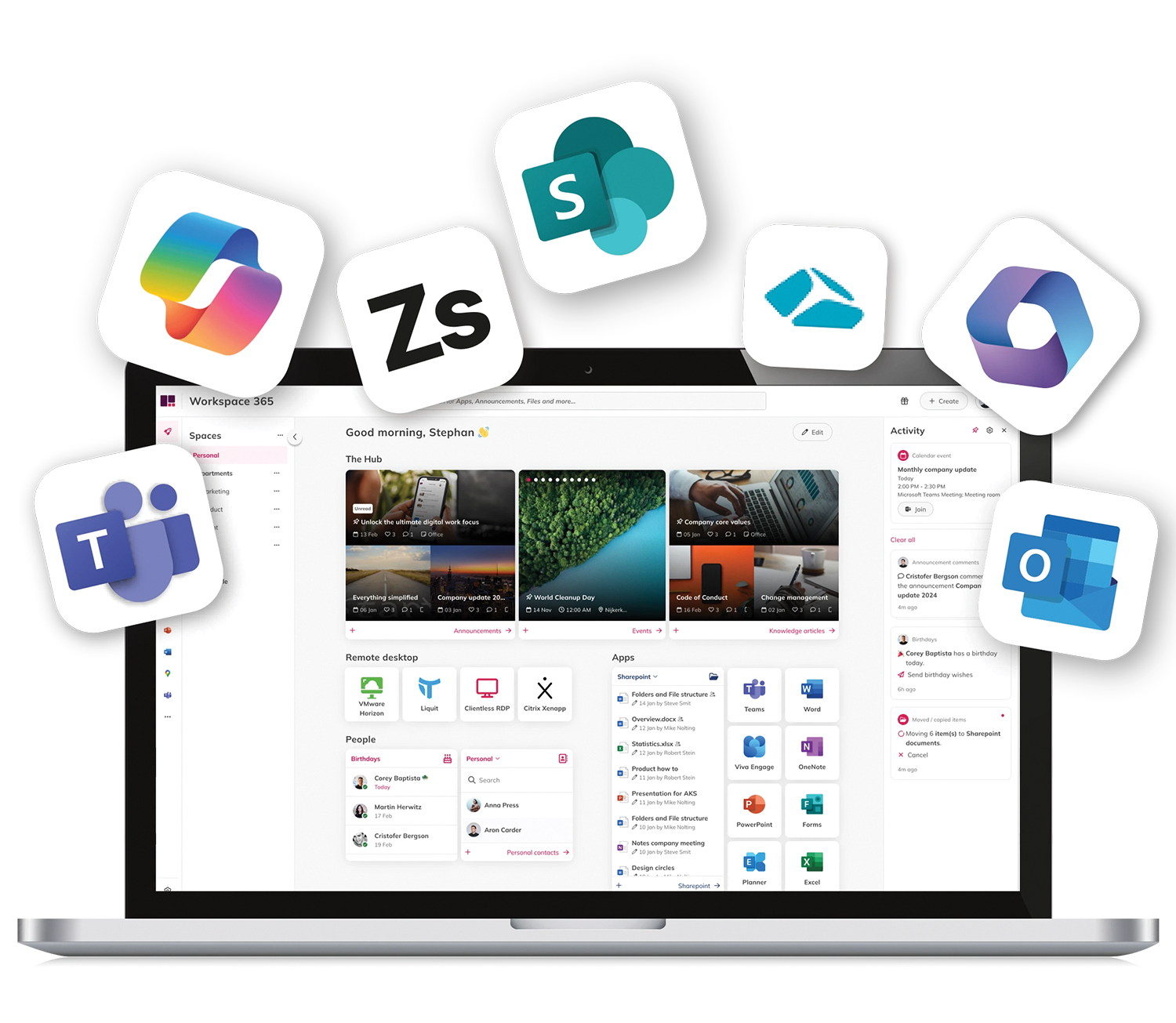In a time where almost everyone seems to be actively involved in or thinking about digital transformation, the term ‘hybrid workspace’ is gaining ground. But what exactly is this hybrid workspace, and is it the same as an adaptive workspace? That’s what I’ll discuss in this blog.
From traditional to modern workspace
There have been some great technological developments in the past decades that have changed the way we work (here’s to WiFi, smartphones and much, much more). But never has digital transformation been as big of a subject as right now. Technology is getting more and more interlinked in the core and foundation of organisations.
That is why many organisations are now planning or in the middle of a digital transformation, meaning they are integrating technology in all areas of their business. This not only includes business processes and communication, but also culture and employee and customer experience. With these transformations, organisations are trying to move from a traditional, to a modern workspace.
Software as a Service
A big element of moving to a modern workspace, is the rise of Software as a Service (SaaS). By switching to subscription and cloud-based software, organisations heavily reduce their reliance on hardware, since many applications can now be reached online from any device. It also significantly decreases the amount of time spent on maintenance and the updating of software.
Moving to the cloud also has many other benefits, such as a reduction in costs and a much greater flexibility, in more ways than one. Therefore, it’s not surprising that many organisations are transitioning to a completely online workspace. However, while many are willing, not everyone is able to part with to their old workspace entirely yet.
A hybrid workspace for a gradual transition
Change takes time, and as much as we’d like it to, it doesn’t happen overnight. Countless organisations are still holding on to legacy software and applications. A reason for this could be that the software in question is not available as SaaS yet. Another is that moving it to the cloud is such a big project, it’s daunting to start – or they’re not sure how to. Does that mean they should call the whole thing off? Of course not. For these organisations, a hybrid workspace can offer a solution.
Bridging the gap between old and new
A hybrid workspace enables you to combine your legacy software with your SaaS applications and use them harmoniously. An example is integrating the file server in the Workspace 365 Document App, together with SharePoint and OneDrive for Business. Or including your remote desktop applications in your digital workspace, combined with all your other apps and information, and reaching them with one click.
It is important to remember that a hybrid workspace is not a goal in itself. It’s a bridge to get you from where you are to where you want to go. It allows your organisation to gradually transform, all the while offering the most possible benefits of a modern workspace.
Hybrid workspace versus adaptive workspace
To the question if they’re the same, the answer is short and sweet: no, they’re not. Though the hybrid workspace is part of the adaptive workspace.
The adaptive workspace encompasses many things, such as the fact that it adapts to your role, location, device and more. We call it the adaptive workspace, because though it is just one workspace, it can be customised to be a perfect fit for any type of person or organisation. It can be standardised and personalised at the same time. And, of course, it can bridge the gap between old and new, by allowing you to integrate your legacy software and combining it will all your information, applications, documents, email and more – even your other platforms.
Keep on transforming, digitally
Digital transformation is here to stay. Literally. Technological developments follow each other at an increasing speed and it seems like every day there are more technological advancements. Keeping up means to keep transforming. An intimidating prospect? Maybe, not so much.
In addition to bridging the gap between old and new right now, the adaptive workspace can enable you to keep transforming in the future. Because besides combining old and new, the adaptive workspace keeps working on combining new with – well, even newer. It is in constant development, allowing you to be as well. Making sure that you can not only smoothly unite your technology from the past and present, but also from the future. This allows digital transformation to become a continuous process, breaking you free from IT restrictions.






